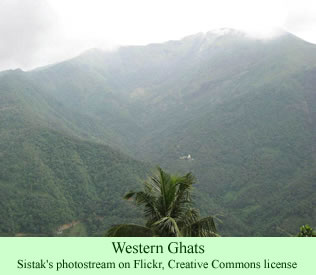The Kadar are now being noticed. Their plight, if not their peacefulness, is receiving some attention lately. A lot of meetings and news stories over the past five years about the proposed Athirappilly Dam on the Chalakudy River in Kerala have focused on elephant corridors and hornbill habitat, with only brief mentions of a Kadar village which would also be destroyed. Some reports didn’t even mention the affected people.
But perceptions about the tribal societies may be changing in India. Several news stories last week focused more on the affects the proposed dam would have on the Kadar villages than they did on hornbills, elephants, and riverine ecosystems. This is not to deny the importance of natural habitats, or the value of charismatic fauna, but it is interesting to note the ways a news story have evolved over the years.
One of India’s leading papers, The Hindu, published last week a story describing a meeting with the press conducted by the head of the Western Ghats Ecology Expert Committee, Madhav Gadgil. Mr. Gadgil said that the Scheduled Tribes and Other Traditional Forest Dwellers Act stipulated that the tribes in India had the right to conserve, protect, and manage forests as community resources or as individual land rights.
 With that perspective, he argued that the community rights of the Kadar villagers had not been recognized in the planning for the dam. “Though forest rights committees have been formed, they are not functioning properly,” he charged. He added that the natural riparian forest vegetation in the Western Ghats, the chain of mountains that dominate the western side of the Indian peninsula, had not as yet been adequately studied.
With that perspective, he argued that the community rights of the Kadar villagers had not been recognized in the planning for the dam. “Though forest rights committees have been formed, they are not functioning properly,” he charged. He added that the natural riparian forest vegetation in the Western Ghats, the chain of mountains that dominate the western side of the Indian peninsula, had not as yet been adequately studied.
Mr. Gadgil’s committee, formed by the Indian Ministry of Environment and Forests, is charged with identifying the ecologically important areas of the mountains and preparing a conservation strategy for them. His group has been meeting with members of the indigenous societies in the mountains, other residents, the Kerala State Electricity Board, the Kerala Forest Research Institute, and the River Research Centre during their investigation. It expects to submit its report to the ministry in New Delhi next month.
At the meeting last week, Gadgil told the press that his group is not necessarily opposed to the construction of the dam. Instead, it is focusing on preserving the environment. Others presented their own testimonies, including a representative of the Kadar village, Ms. V. K. Geetha. She said the dam, if built, would force over 90 Kadar families from the Vazhachal and Pukalappara communities to be resettled. “The proposed site for the dam is hardly 400 metres from the Kadar settlements. Our livelihood is solely dependent on the forest and the river,” she added.
Another news story last week from IPS, the Inter Press Service, took a broader perspective on the treatment of the Kadar in India. It quoted a 60-year old Kadar, Ayyan, who described the way many of their huts would be destroyed if the dam is built. But he took a wider view: “We hear the death knell of our beloved river,” he said. “The government does not give adequate basic amenities to us at the settlement area, where living conditions are very bad. Their assurance on amenities is a pipe dream. Now they want our river and forest for their benefits.”
Other authorities in South India assert that the continuing existence of the Kadar society is not assured. P. Gopakumar, a local writer, told the press that the state government, acting on behalf of promoters in the private sector and their government allies, may be guilty of inflicting violence against the Kadar in the rush to build the dam.
The Human Rights Protection Centre, based in the Kerala city of Thrissur, argued that ever since the government forcibly sterilized some Kadars in 1976, it has not let up on its persecution of the tribe. Other experts quoted by the news story describe changes in the economy and health conditions of the Kadar over the past 70 years. S.P. Ravi, convener of the Chalakudy River Protection Forum, commented that the Kadar need highly nutritious foods in order to combat problems with anemia. The changes in their lifestyle in recent decades, Ravi said, have prompted a high rate of morbidity, and there is no health facility at one of their settlements.
The fact that two major news organizations would focus specifically on the problems of a very small tribal society last week is heartening.